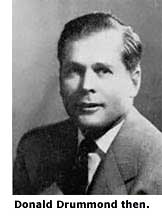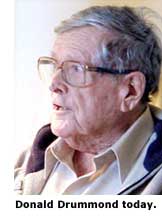The House that 'Home' Built - Page 3
Eichler Homes had similar news to report. "Sixteen houses sold in four locations," read a telegram from Eichler Homes' staffer D.L. Stoffe. "Total of 61 various houses sold within the four developments [most likely those at Terra Linda, Sacramento, San Mateo, and either Palo Alto or Walnut Creek]. Attendance in first 12 days approximately 10,000. Public response excellent. Sizable coverage of story in all San Francisco newspapers and many others in Northern California."

As it turned out, the 'House That Home Built' was unable to ignite a nationwide desire to live in Eichler-style homes. By October 1955, Home was planning new programming for 1956 with New York architect Eldridge Snyder designing three conservative, split-level ranch alternatives. Neither Drummond nor Eichler would participate in this second program.
By the late '50s, romantic styles trickled into shelter magazines, crowding out the modern. For some builders, Home was their first and only foray into modern design. For Drummond, however, the program was just one step in a career largely devoted to modern home construction.
Today, although the 'Drummonds' have not achieved the mythical status of Eichler homes, they have a dedicated, cult-like following of owners—many artists, designers, architects, and realtors among them—who appreciate their open plans, post-and-beam structure, and expansive glass.
Builder of 1,100 Kansas City Homes,
Donald Drummond Had an Eye for Modern

Donald Drummond was a remarkable individual who pioneered modern residential architecture in Kansas City, Missouri. He was a part of a small group of merchant builders in the United States who succeeded in building post-and-beam, glass-walled tract homes.
Also remarkable are the parallels between Drummond and Joe Eichler. Both promoted the virtues of modern indoor-outdoor living—virtues that played better in the cultural and natural climate of California. While Eichler was building 11,000 homes in California, Drummond was building as many as 1,100 homes in the smaller, more conservative Kansas City market. Drummond's operation, which lasted from 1946 to 1964, was of average size for a central states merchant builder. Eichler cited time spent living in a Frank Lloyd Wright house in Hillsborough as having shaped his sensibilities. For Drummond, it was an education in engineering that informed his work.
According to Kansas City real estate broker Scott Lane, Drummond and Eichler were targeting the same market. "These homes were built for the sports car-driving, pipe-smoking, wine-drinking enthusiast," he says. "These homes were for the owner who read New Yorker magazine and had a refined appreciation for modern living."
Born in Chicago in 1915, Donald H. Drummond moved to California at age three. He grew up in La Jolla, "knowing at age six that one day I wanted to be a builder." After attending California Institute of Technology, and Stan-ford University, where he graduated with a mechanical engineering degree in 1937, he began working for Henry John Kaiser, building Shasta Dam.
Drummond met his future wife, Frances Woodruff, at Stanford. After marrying in the early 1940s, he worked as chief engineer for Harland Bartholomew and Associates, overseeing construction of more than 20,000 units of defense worker housing, mostly in Virginia.

After World War II and three years with the Seabees, the construction battalion of the Navy, Drummond moved to the Kansas City area. In 1946, just before Eichler, Drummond and Francie began building homes. Drummond's first self-designed homes did not use a contemporary vocabulary. "They were just boxes," he says. "They were more of an engineer's house. They were logical, but not beautiful."
Drummond also built flat-roofed designs known today as 'flatties.' These came from successful Bay Area builder Earl 'Flat Top' Smith. "I was interested in them because of the framing," he says. "Being an engineer, I liked-a beautiful structure." Eichler also built from Smith's plans-before hiring Anshen+Allen, his first architectural team, in 1949.
Unhappy with these early designs, Frances Drummond insisted they hire an architect. "I had a smart wife," Drummond brags. Starting in 1949 Drummond's projects were designed by Kansas City architect David B. Runnells. Runnells had attended the Cranbrook Academy of Art in Michigan, and worked for architect Eliel Saarinen, a patriarch of American modernism. The homes were 900-square-foot modern Cape Cods. Runnells used a post-and-beam construction that would become a Drummond trademark.




